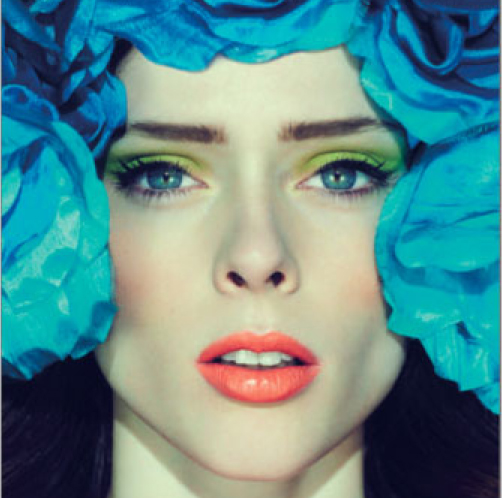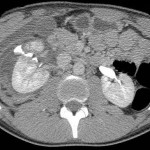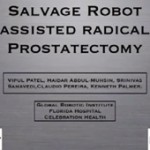Design and the new BJUI
One of the most exciting challenges in magazine design is updating the look of a medical journal. In the past, academic publications did not discernibly change their look, even with editorial changes. A recognised font and layout was perhaps seen to imbue trust and respect, which are important to the integrity of the journal. However, just as editorial content and practice evolves there is great potential in pushing forward design and layout in academic text for both the reader and the editorial team.
WOUND Magazine, Issue 2, Spring 2008, courtesy Ben Slater.
Beyond the content, which aims to be of the highest quality, the experience of the reader as his/her eyes ‘walk’ through the journal is paramount. Take the cover – the ‘old style’ journals serve textual content on their front cover, much like the classical paintings depicting a familiar scene. In the same vein, modern abstract pieces evoke something more intangible, more individual. This is not to say we wanted a design based in abstraction, it is in fact the opposite; we wanted the new design to be relevant to the content, the reader and the field. But we needed to break away from the past, to reflect how we are an exciting specialty and to do this we distilled the essence of The Journal into design elements that acknowledged its past but looked to its future. What you see on the new covers are our amazing treasure trove of ‘Surgery Illustrated’ images from Stephan Spitzer and Joe Thüroff, a clean new font and a subtle wave pattern separating text and image, to herald the energy and change that we are proud to be a part of at the new BJUI. More changes lie within The Journal itself. There is greater emphasis on visual relevance: photography, useful illustrations, prioritising content. Different fonts and sizes have been developed to ensure excellent readability. The gamut of section colours in previous editions has been pared down to allow greater visual cohesion. Our readers have told us that it is simply a more pleasant read, graphically speaking.
The same return to clean lines is seen in the new website, www.bjui.org. Web journals usually have a much bigger audience than the paper versions, as they are easily accessible by non-medical groups. In fact, we discovered this when we did an initial analysis of who actually visited our website: answer, a lot more patients and concerned spouses than we assumed. So easy, clear navigation, with an uncluttered, intuitive design were imperative. The effect is plain to see – the website now feels vital: in addition to fully indexed articles of the week and editorials, it has dynamic image reels, blogs, videos, archives and a social media platform, basically all the things that a paper journal cannot provide. By constantly interacting with our readership, we are at the pulse of what is happening in the urology world and our new website aims to be the best forum to do so. So imagine all this resource packed into a single landing page that adapts to any mobile device or tablet. Good design encourages the reader to stay, explore and engage, rather than become overwhelmed and look elsewhere.
In keeping with the theme of bold design, this month we feature a beautiful article from Bennett et al. accompanied by an editorial from Vincent Zecchini and David Neal. The translational message is simple – bicalutamide enhances autophagy of LNCaP cells, which in turn has a pro-survival effect. The inhibition of autophagy enhances the killing of prostate cancer cells by docetaxel chemotherapy. The article contains not just quality science but stunning images of confocal and phase-contrast microscopy, which feature prominently @BJUI.org.
The design of the BJUI will continue to evolve as we grow and explore more ways to bring our message across the global urological, surgical and scientific communities. What you see is only the start of what we aim to achieve. We hope you enjoy the journey with us.
Tet Yap
Associate Editor (Design)
Prokar Dasgupta
Editor-in-Chief




